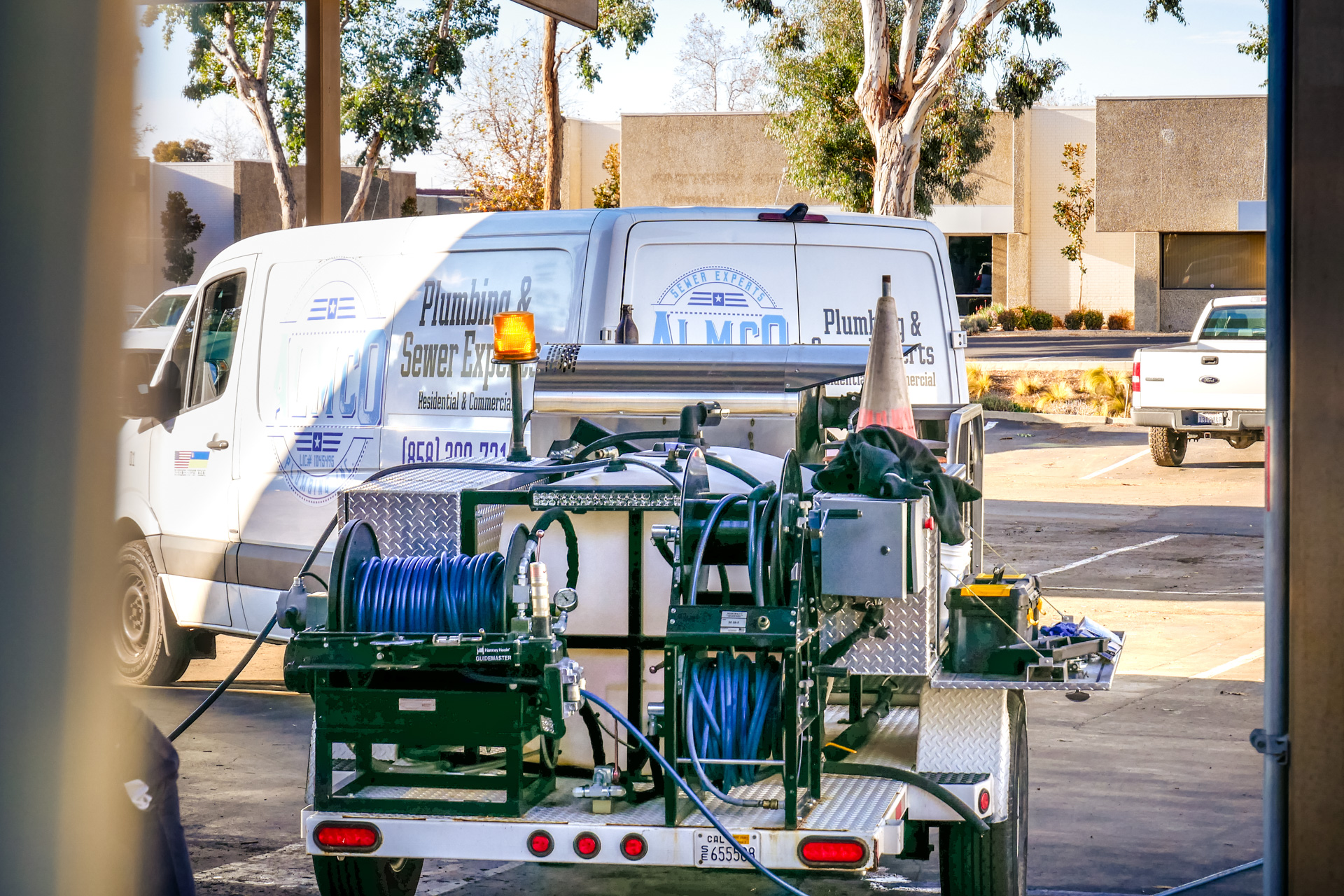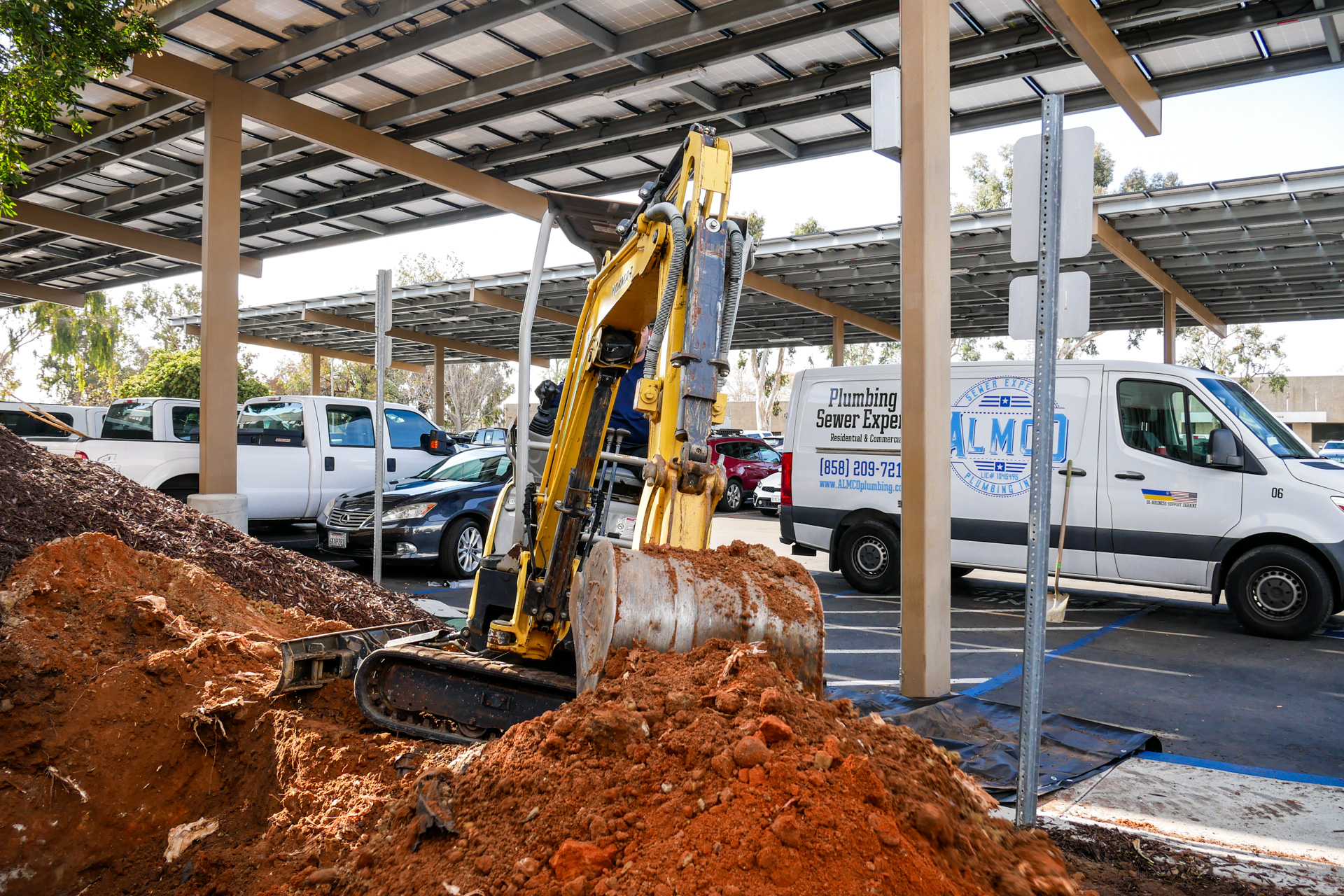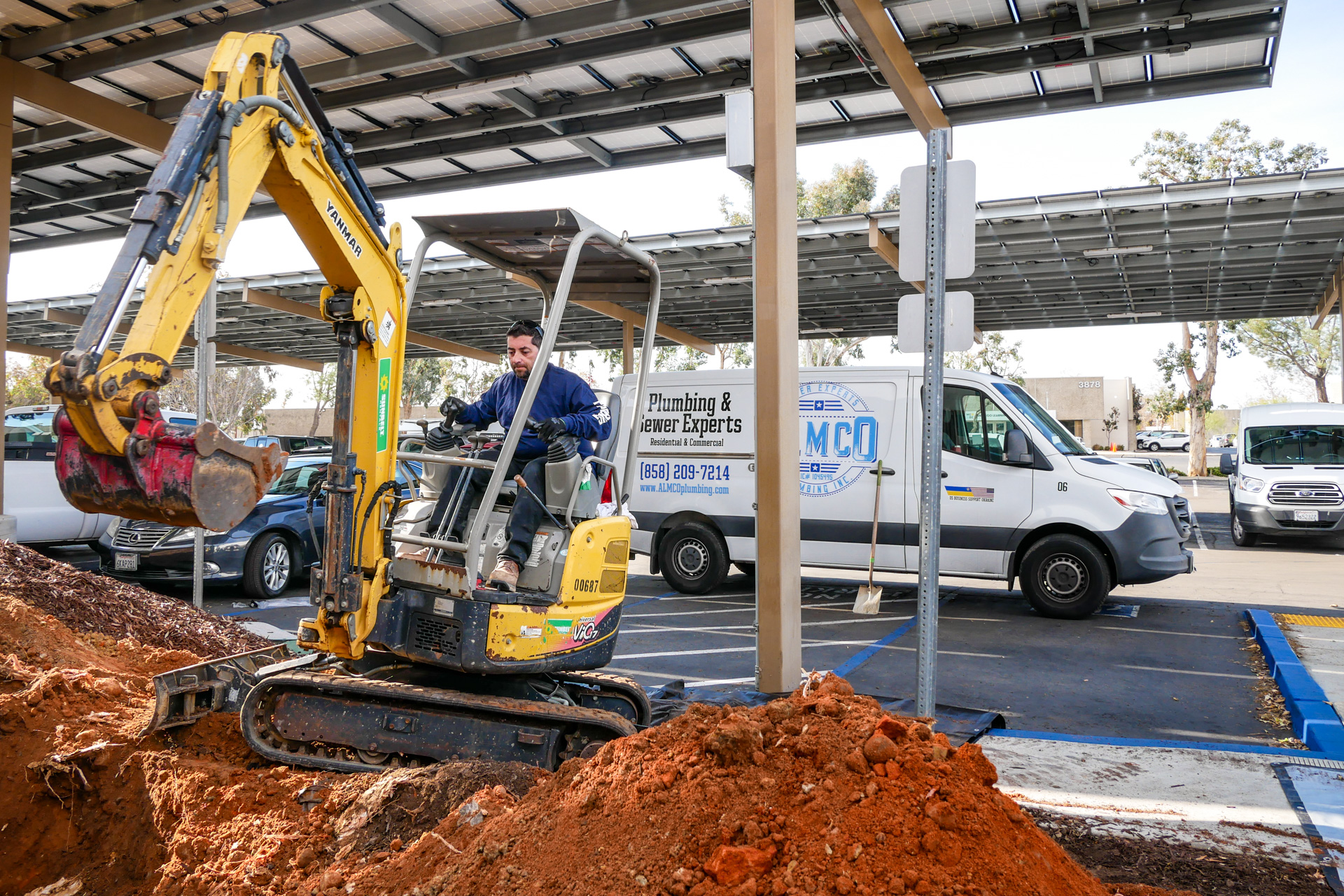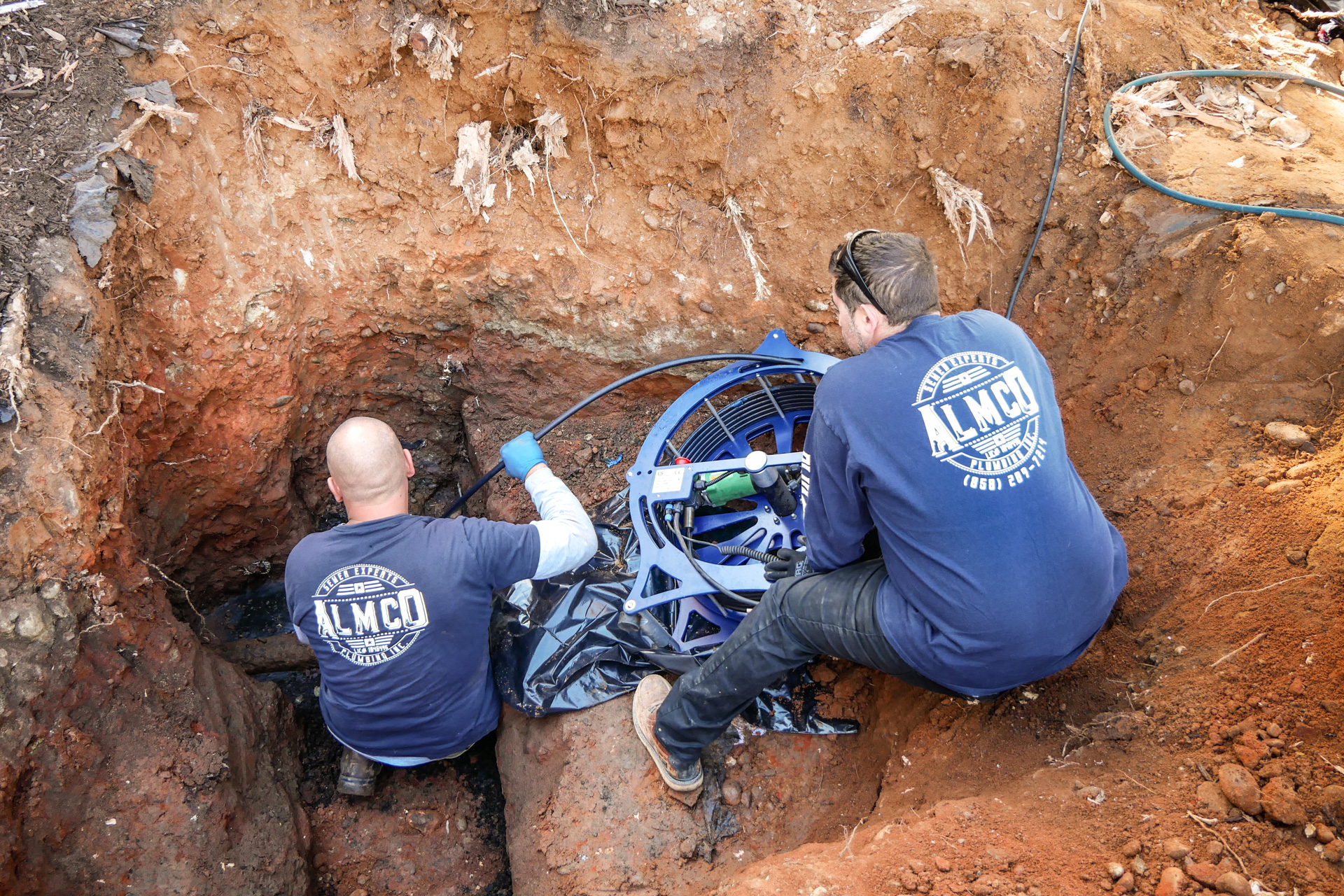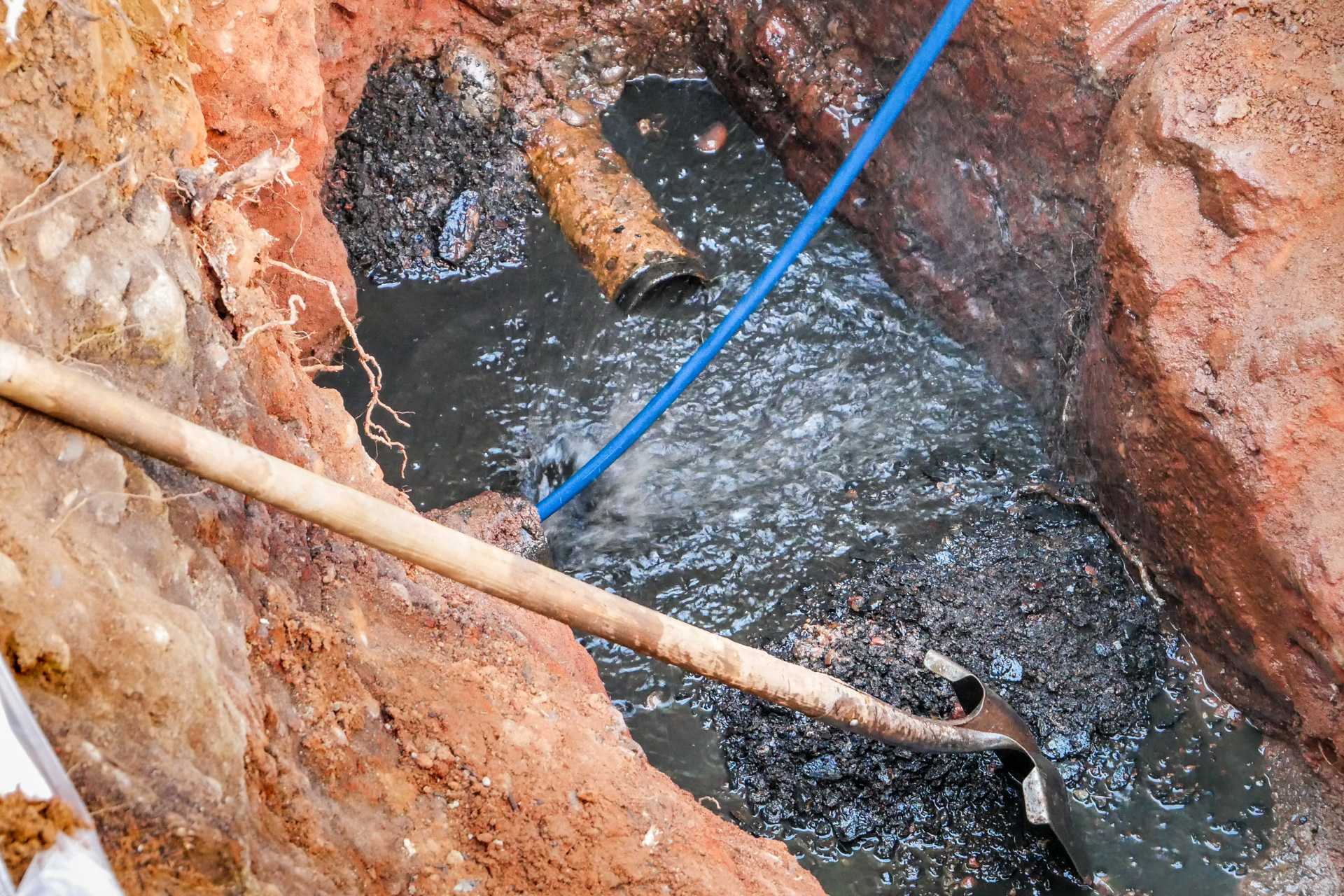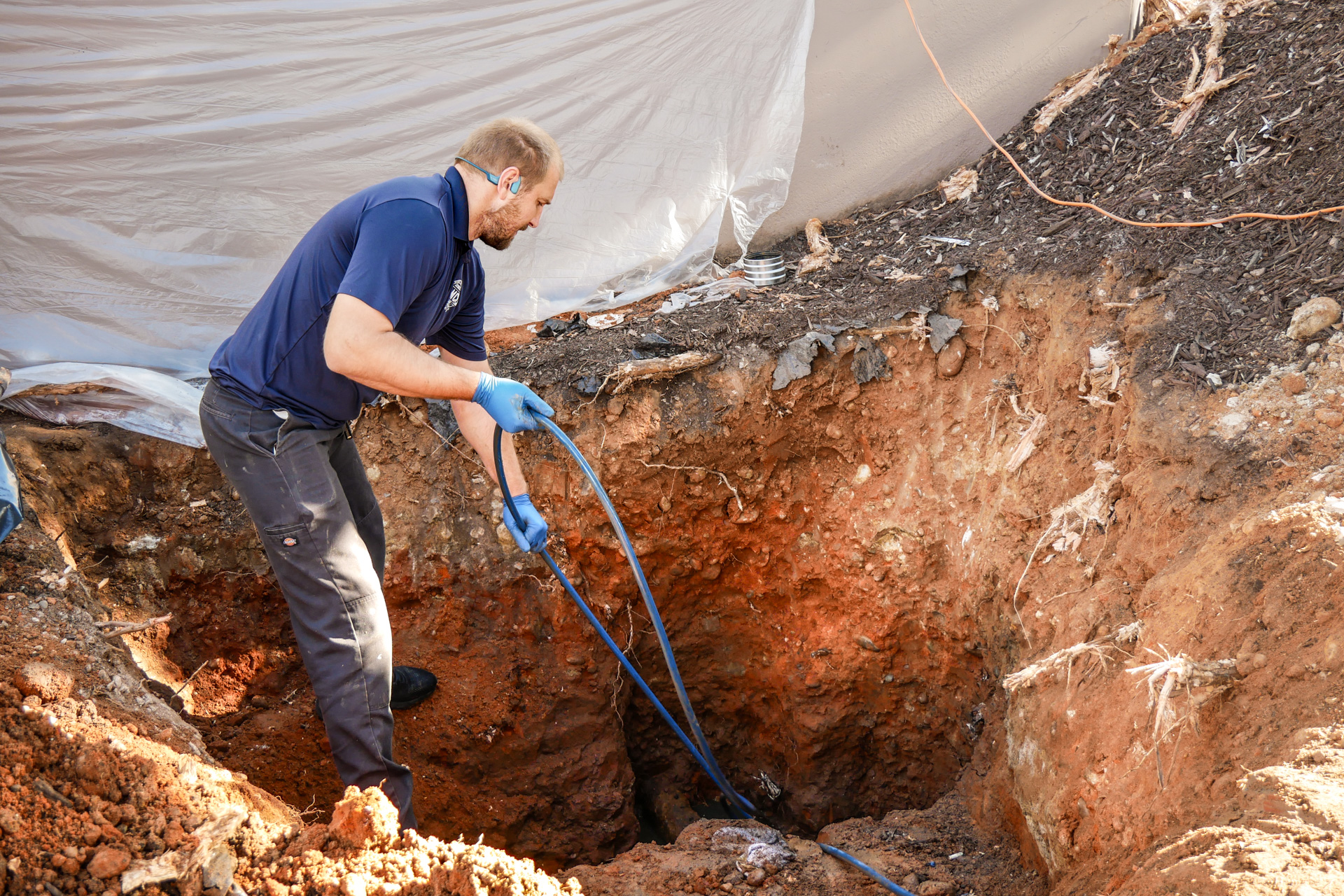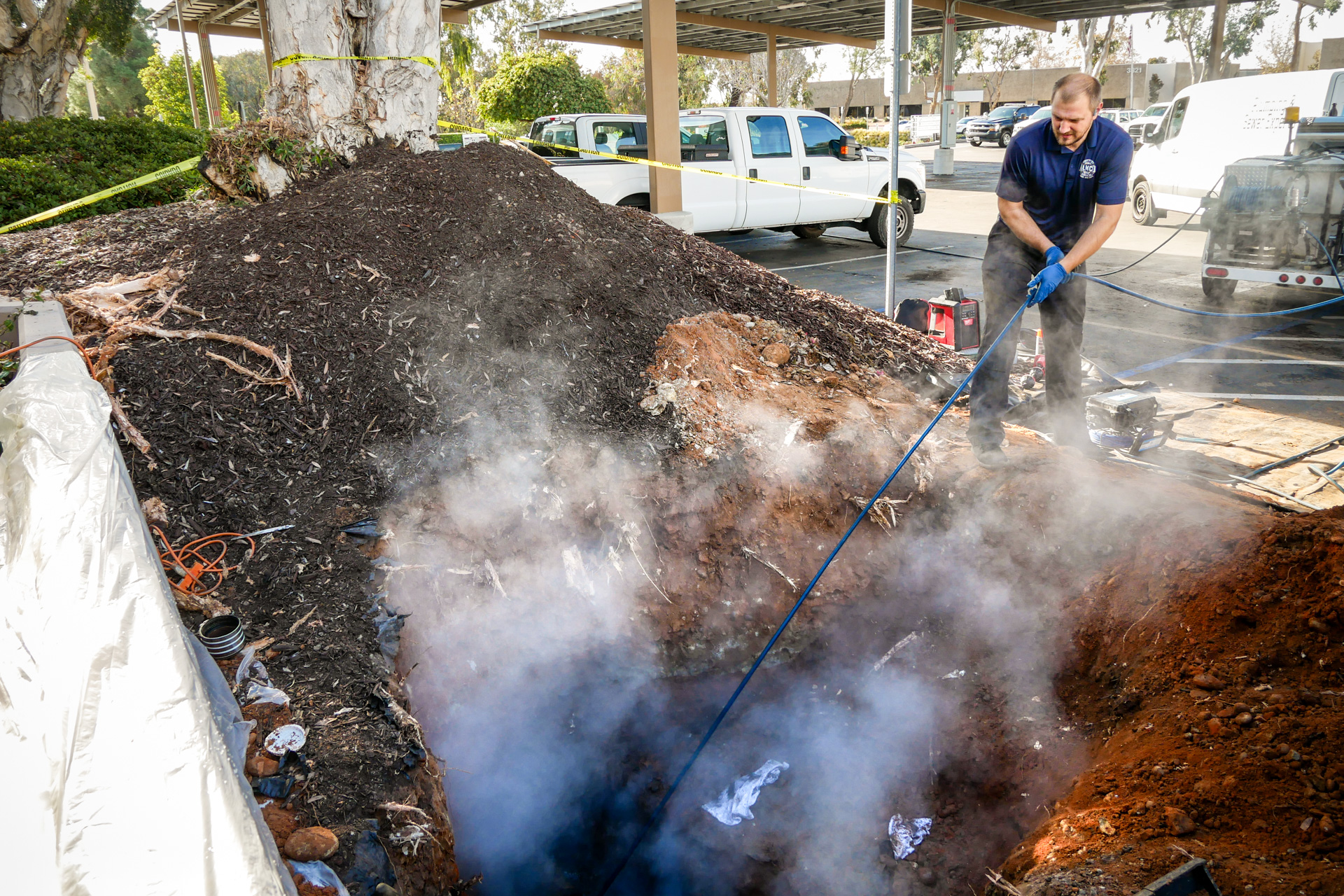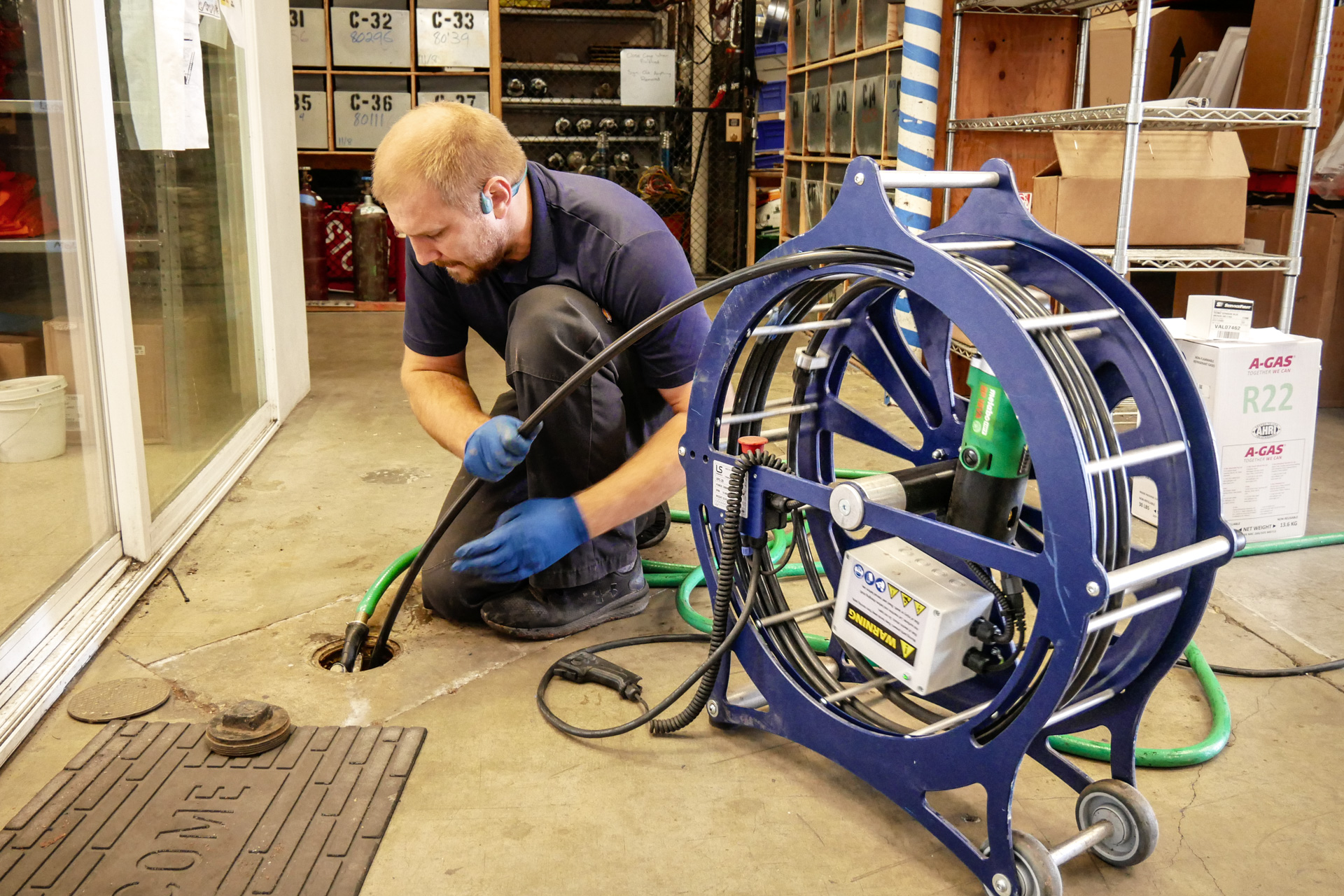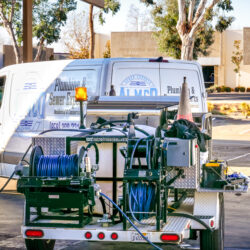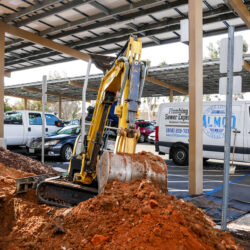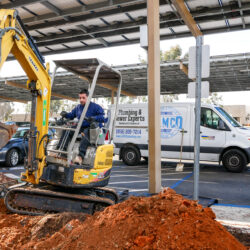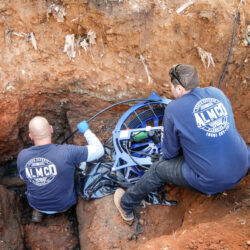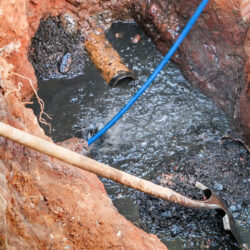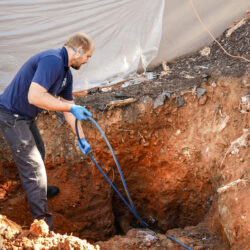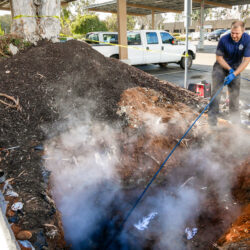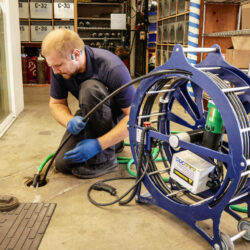How to Repair 150 Feet of Sewer Line in an Office Building Over a Weekend: Almco’s Real Case Study
Sewer systems in commercial properties experience heavier usage, often leading to premature wear and frequent blockages. Building owners increasingly seek innovative solutions—like Spray Epoxy CIPP or Pull-in-Place methods—that minimize landscape disruption while ensuring fast, efficient repairs with no office downtime. Below is a real case study from Almco Plumbing, in which our specialists successfully repaired 150 feet of sewer line over a single weekend.
Contents
Technologies & Services
Customer Problem Description
The client was experiencing frequent sewer blockages beneath their commercial office building in San Diego. Since business operations needed to resume on Monday, all repairs had to be completed over the weekend.
To reduce excavation and avoid extensive demolition, Almco chose a trenchless solution using Spray Epoxy technology. This method allowed full sewer functionality to be restored with minimal impact on landscaping, interior spaces, or access roads.
Sewer Repair Preparation
Following the utility layout diagram, Almco technicians located the main 4-inch cast iron sewer pipe—approximately 150 feet long—running beneath the building with access from two manholes. A 5-foot-deep trench was excavated at the most accessible location. Two cleanouts were installed to allow future service on the entire 300-foot run, which included a 90° turn at the 150-foot mark. With two manholes, both pipe directions can now be serviced efficiently.
The exposed pipes were visibly deteriorated and were removed to be replaced with ABS piping, clearing the path for equipment access. Soil and vegetation were placed on tarp sheets to preserve them and prevent contamination during reinstallation.
Main Sewer Pipe Repair Work: Hydro-Jetting & Spray Epoxy Lining
The repair process involved several key stages.

Using a hydrojet system, the team removed dirt, grease, and debris from the pipe interior. Then, a rotary shaft with carbide chain attachments cleared calcified deposits and corrosion.
In the final preparation stage, the rotary attachment was swapped for an abrasive head, which smoothed out any remaining surface roughness or irregularities.
A CCTV inspection followed, assessing pipe wall damage and helping select the appropriate repair approach.
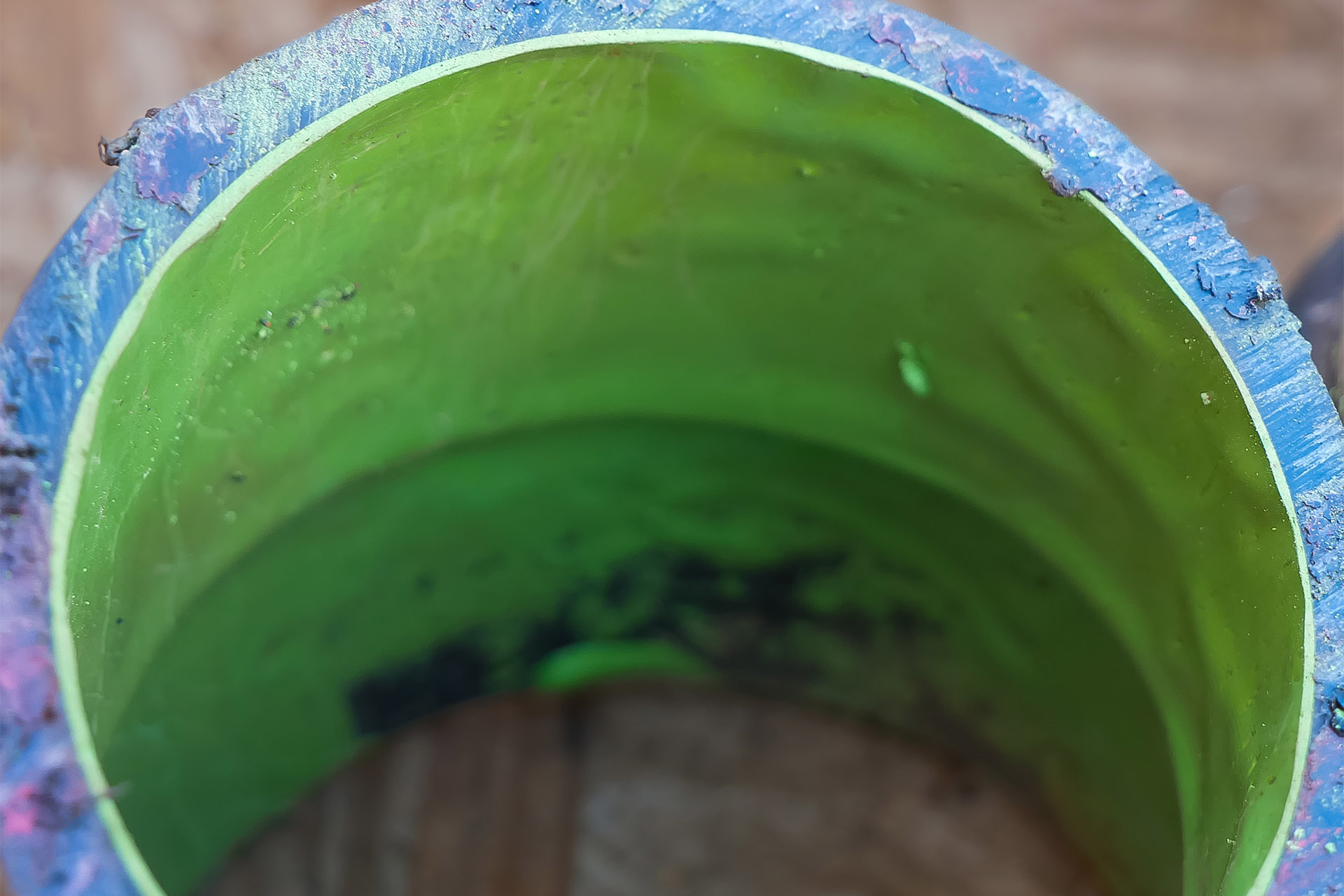
Based on the inspection, Almco technicians opted for Spray Epoxy lining. Using specialized equipment and a spray head, epoxy was applied evenly throughout the 150-foot pipe.
Application quality was monitored in real time via CCTV. The brightly pigmented epoxy made worn sections easy to identify, allowing technicians to apply a thicker coating where needed. The same process was used on a plumbing stack inside the building.
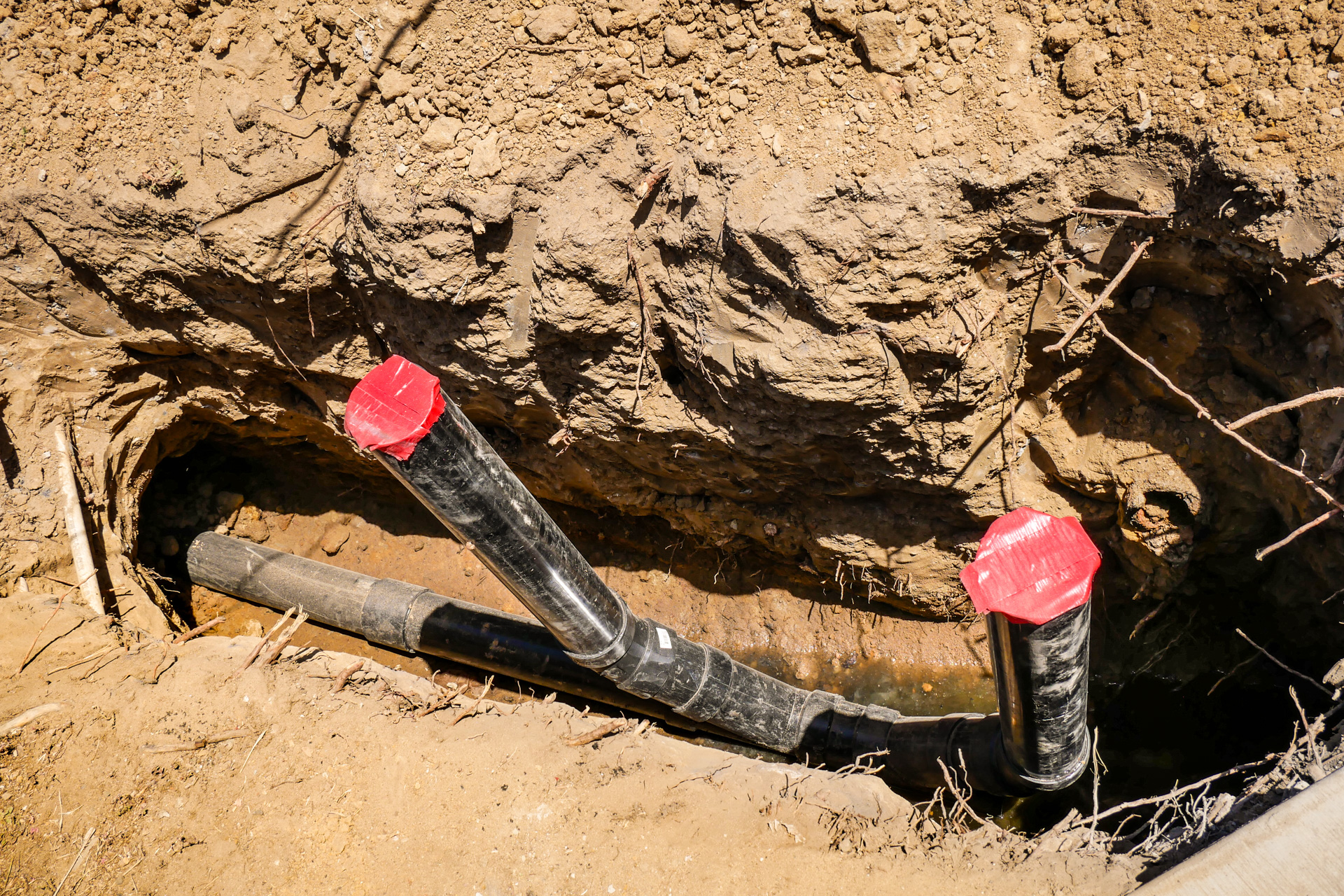
After curing, the system was reconnected to the city sewer using PVC fittings. New cleanouts were also installed using PVC piping. All joints were sealed with a waterproof sealant and secured with stainless steel clamps, ensuring durability for over 50 years.
Once the repair was complete, the sewer line was tested for weathertightness and flow capacity. The trench was then backfilled, the soil compacted, and shrubs replanted, restoring the original landscape.
